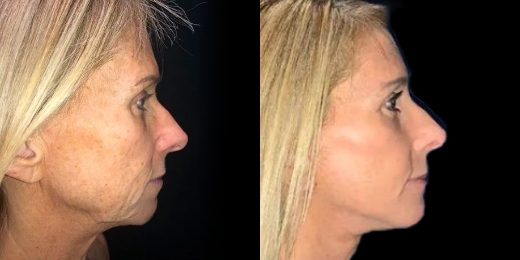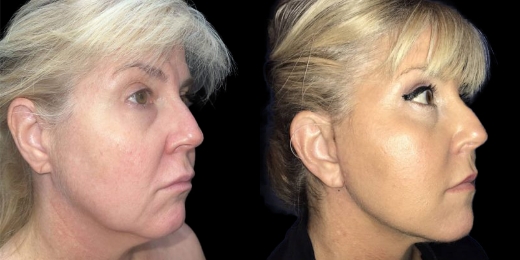This may seem like a strange question for us to ask but…
What is cosmetic surgery?
Cosmetic surgery is generally defined as procedures that are focused on improving a patient’s appearance through ideals of enhanced symmetry and proportions for virtually any part of the body. Since cosmetic surgery is focused on approving the appearance of otherwise functional parts, it is considered elective.
We can’t change what medical institutions and insurance companies deem as elective. However, at Greenberg Cosmetic Surgery, we’ve seen time and time again the desire for improved aesthetics is more impactful than the term elective would have you believe.
Body contouring, breast augmentation, male breast reduction for gynecomastia, rhinoplasty. All of these procedures and more Dr. Greenberg has performed to great success. We have seen first-hand how these procedures have improved the wellbeing of our patients who were desiring a change in their life. For many people of Asian descent, double eyelid surgery is that highly impactful aesthetic change.
Contents
What is “Asian Eyelid Surgery”?
More than a decade ago, a slew of publications were increasingly reporting on the controversy of a cosmetic surgery trend that was (and continues to be) on the rise in various parts of Asia. Colloquially dubbed “Asian eyelid surgery”, due to the sheer popularity of the treatment in Asia, the cosmetic procedure known as Asian blepharoplasty was patented by William P. Chen, M.D. in 1987.
Since then, it has quickly become one of the top cosmetic surgical procedures of choice for countries such as South Korea and Japan as it is frequently cited that approximately 50% of Asians do not have an upper eyelid crease. So what’s the big deal?
While there are many in Asia who are interested in getting the procedure done, there are also many people who feel that the surgery is an attempt at mimicking western beauty ideals. Interestingly enough, the first published description of this procedure—according to the cited study was in the late 1800s, far before any significant Western influence was present in Asia.
Additionally, in South Korea—often dubbed the “plastic surgery capital” of the world, Asian blepharoplasty reigns supreme along with a host of other procedures done to accentuate if not radically makeover the looks of high-profile Kpop (that is Korean Pop) idols. In Korea, plastic surgery is fairly destigmatized and viewed as an enhancement or luxury purchase. Many Korean men and women of all ages seek out surgeries to emulate their favorite artists and celebrities.
Cosmetic Surgery and Beauty Ideals
It is not our place to say or judge. However, if the 30 years of experience of Dr. Greenberg, as well as the many decades of experience at Greenberg Cosmetic Surgery, has taught us is that ultimately you can’t negotiate beauty. Cosmetic surgery aids people in achieving their conception of beauty, but it does not define it—the patient does that. Over the hundreds of procedures we have performed, there may have been trends, but there have always been differences too. Even in a common procedure such as a rhinoplasty, the variance in what people prefer can be wide-ranging even within traditional preferences. Similarly, a misconception about East Asian blepharoplasty exists where it is assumed the procedure is meant to westernize eyelids.
However, that is decidedly untrue as well. At Greenberg Cosmetic Surgery, we perform our procedures with respect to every patient’s unique features. Caucasian eyelids have a full U shape to them which you would scarcely find any cosmetic surgeon attempting to place onto Asian features.
If you are a patient seeking Asian blepharoplasty, you may be wondering what to expect aesthetically from the surgery. Double eyelid surgery is typically done to create a full yet natural-looking result that suits all Asian features!
How is Asian Blepharoplasty Performed?
Asian blepharoplasty is occasionally referred to as double eyelid surgery because the surgery seeks to create a natural-looking eyelid crease through either the tying of a suture or by external incision.
External incision is done by creating a small incision right in the eyelid where the crease should be. From there, excess tissue and fat are removed. Interestingly, the mark of the incision is then hidden inside the fold for making the process seamless. In a sense, the process can be seen as the opposite of a traditional blepharoplasty, in which the goal is to lift the eyelids to fix drooping or sagging.
Asian Eyelid Surgery Recovery Time
Much like a traditional blepharoplasty, recovery time for Asian blepharoplasty can range from 1-2 weeks. Swelling should be expected but can be greatly minimized through the use of cool compresses. Sutures are generally removed in 4-5 days and patients are advised to refrain from strenuous physical activity for up to two weeks. Additionally, it’s recommended that (temporarily) you not spend too much time staring at screens or reading, as these activities do contribute to eye fatigue.
Asian Eyelid Surgery Consultation
We are proud to have Dr. Stark join us at Greenberg Cosmetic Surgery. Dr. Stark has a passion for plastic surgery as well as non-surgical cosmetic procedures. As a classically trained artist in drawing, painting, and sculpting, Dr. Stark can envision the perfect way for you to reach your aesthetic goals and then make them happen with her surgical expertise.
In the case of Asian Blepharoplasty, we can think of no one better suited to creating a beautiful, natural result. If you are interested in getting Asian blepharoplasty performed but have questions about the procedure, Greenberg Cosmetic Surgery would love to hear from you!
Contact us today to book a consultation or if you have any questions you’d like answered. Additionally, we are offering free virtual consultations with respect to social distancing efforts as well as patient comfort.
We look forward to hearing from you soon!


